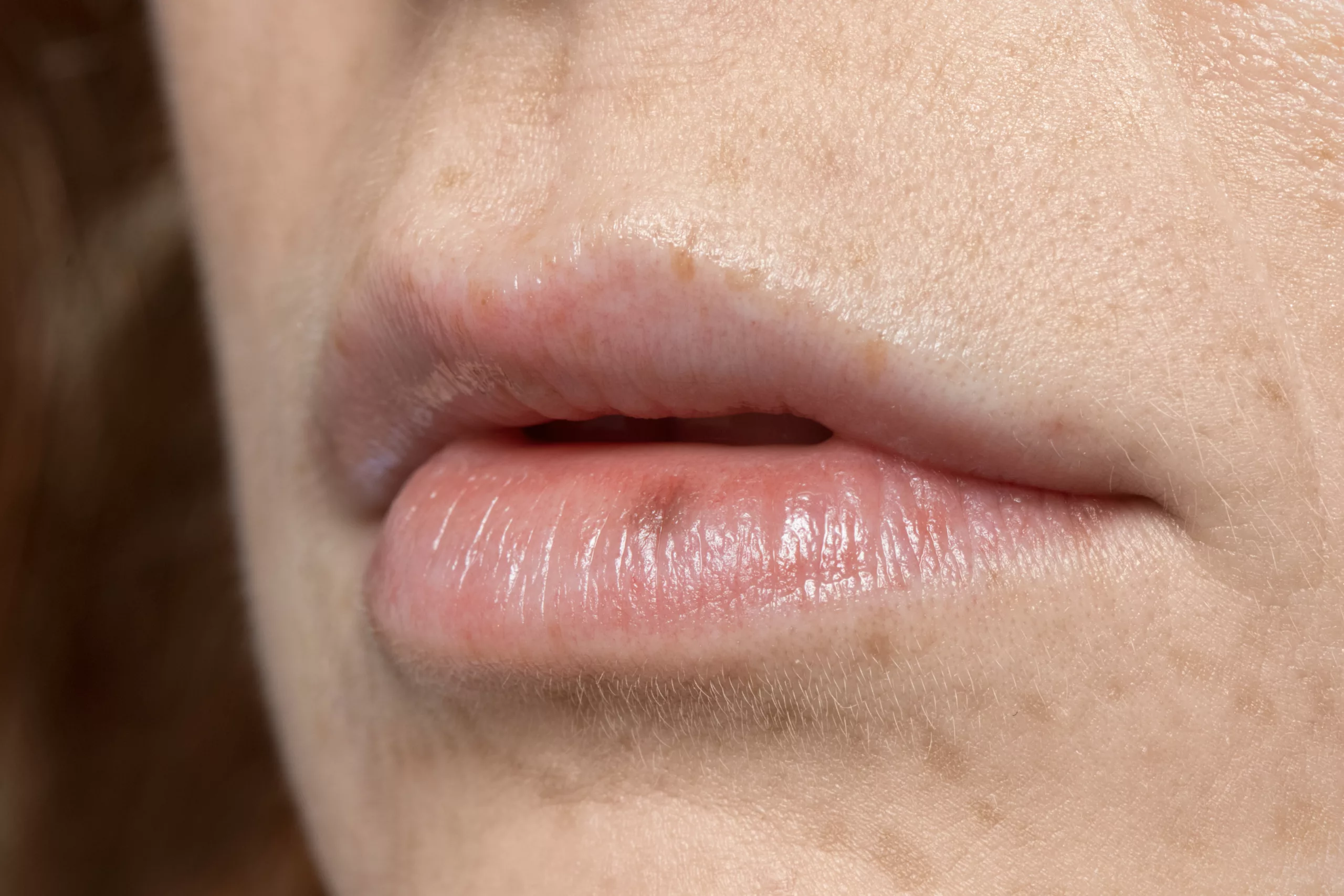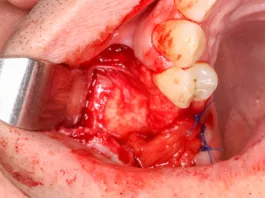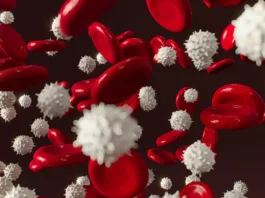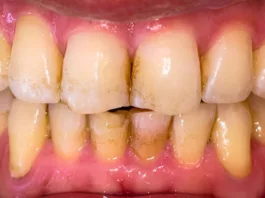Oral cancer can manifest in various types, and one significant site where it can develop is the lips, known as lip cancer. This type of cancer typically originates from the squamous cell lining of different facial structures, such as the lips, tongue, cheeks, and throat. Due to its distinctive appearance, lip cancer is often diagnosed in its early stages, resulting in a positive prognosis.
Lip Cancer has a very unique presentation. In the initial stages, it usually presents as a boil or a sore. If a sore or a boil persists for more than three weeks, you should seek advice from a physician. Therefore, it becomes mandatory to seek professional help from a physician. Normally, the next course of action involves a biopsy of the lesion. The result of the biopsy decides the nature of the treatment.
Types of Lip Cancer
Lip Cancer is an entirely different type of cancer that most commonly arises from the squamous cell lining of the epithelium. However, it can also arise from basal cells and is then named ‘basal cell carcinoma.’
Squamous Cell Carcinomas
As the name suggests, squamous cell carcinoma is a cancer of the squamous cells. It mostly appears as thick, scaly patches that can bleed or crust. The lower lip is the most common site of lip cancer. Squamous cell carcinoma is one of the most prevalent carcinomas of the oral cavity, followed by non-Hodgkin Lymphoma and Mucoepidermoid carcinoma1Dhanuthai, K., Rojanawatsirivej, S., Thosaporn, W., Kintarak, S., Subarnbhesaj, A., Darling, M., Kryshtalskyj, E., Chiang, C. P., Shin, H. I., Choi, S. Y., Lee, S. S., & Aminishakib, P. (2018). Oral cancer: A multicenter study. Medicina oral, patologia oral y cirugia bucal, 23(1), e23–e29. https://doi.org/10.4317/medoral.21999
Basal Cell Carcinomas
Basal cell carcinoma usually presents itself as a crusty spot on the lips. It tends to heal with a delay. However, in a few cases, it heals but has a high probability of recurring as well. Unlike squamous cell carcinoma, the upper lip is the most common site of basal cell carcinoma. The stats prove that squamous cell carcinoma of the lip is usually much more prevalent than other types2Schnur, J., Johnson Shaw, M. E., Carnio, L. R., & Casadesus, D. (2020). Aggressive squamous cell carcinoma of the lip. BMJ case reports 13(12), e239281. https://doi.org/10.1136/bcr-2020-239281
Some other less common types of lip cancer include:
Melanoma
Melanoma of the lip is rare but serious. It can arise from the pigmented cells of the skin (melanocytes) or from the mucosal lining inside the mouth. When it involves the mucosa, it’s referred to as mucosal melanoma—a more aggressive type with a different behavior than cutaneous melanoma. Any pigmented lesion on the lip that changes in shape, size, or color should be evaluated early.3VISCARDI, J. A., SCAMPA, M., WALZ, S. N., MARTINEAU, J., DI SUMMA, P. G., GIORDANO, S., KALBERMATTEN, D. F., & ORANGES, C. M. (2023). Cutaneous Melanoma of the Lip: A SEER Analysis of Epidemiology and Survival Outcomes With Focus on Surgery and Other Treatment Options. In Vivo, 37(3), 1164. https://doi.org/10.21873/invivo.13191
Minor Salivary Gland Tumors
The inner surface of the lips contains small salivary glands. On rare occasions, tumors can develop from these glands, usually on the lower lip. These tumors can be benign or malignant, and diagnosis often requires a biopsy and further evaluation.

What are the Common Symptoms?
Although lip cancer has a common presentation, there is a significant lack of information and facts available on this topic. It is often mistaken as a typical blister, which is why people tend to overlook it and not take it seriously. However, neglecting lip cancer can lead to severe consequences. It is crucial to give proper attention to any blisters or sores that do not heal and diagnose the underlying cause. Fortunately, when lip cancer is detected early, its prognosis is typically favorable. Lip cancer presents with several symptoms, a few of which are listed below:
- Blister, sore, or an ulcer that does not heal
- Bleeding from lips and mucosa is also a prominent symptom.
- Pain and numbness on the skin or around the mouth are leading characteristics.
- Swelling of the jaw is often associated with lip cancer, too.
- Thickening of the lip.
- Discoloration of the lip from its normal red, plump texture to either white or black.
- Hardening of the lips.
What can be the Causes of Lip cancer?
Lip cancer is a multi-factorial disease. All cancers are usually multi-factorial and have various causes and factors which predispose to their existence. Some of the causes of lip cancer are in common with other types; for instance, both lips and lung cancer are caused by smoking. Let’s look into other causative factors of lip cancer:
- Excessive Use of Tobacco (smoking cigarettes, cigars, pipes, and chewing tobacco) can result in lip cancer.
- The Weak immune system of the body or immunocompromised people due to organ transplant.
- Fair skin is also a major factor and normally occurs more in males over age 50.
- Alcohol use is also a risk factor for lip cancer.
- Patients infected with Human Papillomavirus are often diagnosed with lip cancer.4Syrjänen S. (2005). Human papillomavirus (HPV) in head and neck cancer. Journal of Clinical Virology: the official publication of the Pan American Society for Clinical Virology, 32 Suppl 1, S59–S66. https://doi.org/10.1016/j.jcv.2004.11.017
Stages of Lip Cancer
Lip cancer is further classified into various stages. Decisions related to the management and treatment of lip cancer become easy. Each patient is treated as per his current stage of cancer. This protects him from the aggressive side effects of extensive and unnecessary treatment. The four stages of lip cancer are as undermentioned.5Johns Hopkins Medicine. (n.d.). Lip Cancer. https://www.hopkinsmedicine.org/health/conditions-and-diseases/lip-cancer
Stage 0, or the very beginning of Stage
There are abnormal cells in the lining of the lips or oral cavity, which can become cancerous. Stage 0 is also called carcinoma in situ.
Stage 1
It is an early stage of cancer, and in this, the tumor is not more than 2 cm; moreover, the cancer has not reached the lymph nodes.
Stage 2
In this, the tumor is larger than 2 cm but not more than 4 cm, and it has not yet spread to any lymph nodes in the neck.
Stage 3
In this stage, cancer is larger than 4 cm, or it has spread to any lymph node in the neck.
Stage 4
It is the most advanced stage of lip cancer. In patients with this stage, the cancerous lesion can be of any size and can be present in many other parts of the oral cavity as well. One of the major characteristic features of this stage is that cancer has already spread to 1 large lymph node on the same side of the tumor or multiple lymph nodes of any size on the same side of the neck as the tumor or one lymph node of any size on the contralateral side to the tumor.
How to Diagnose Lip Cancer?
Diagnosing an ailment is always tricky. Multiple examinations and investigations need to be done before a definitive diagnosis can be made. For instance:
Comprehensive History
The first step is to take a detailed and comprehensive history. Being a patient, you must show full cooperation and share all the relevant details with the doctor for the right diagnosis.
Oral Examination
Deep oral examination for the lesion and other mucosal sites can show signs of early lip cancer. These areas can show crusting and induration in the mucosa or any other presentation. Lymph nodes must be examined as well. It is important to note that early stages of lip cancer can spread by invading the cells and tissues of the jaws, specifically the lower jaw.
Investigations
One or more of the following tests and investigations would probably be conducted when your doctor suspects lip cancer:
Complete Blood Count (CBC) Test
A complete blood count (CBC) is a routine blood test that can provide helpful information during the investigation of lip cancer. While it cannot diagnose lip cancer on its own, a CBC can assess factors such as hemoglobin levels, white blood cell count, and platelet count. Abnormalities in these measures may indicate possible complications or immune responses associated with lip cancer.
Incisional Biopsy
The doctor might also perform an incisional biopsy to remove a sample of the suspicious lesion from the lip. This sample is then examined under a microscope to determine the type of cells involved and provide important information about the treatment options and prognosis for lip cancer.
If you have a mass growing in your neck, a fine needle aspiration (FNA) biopsy may be done to see if it contains cancer cells. Not all growths are cancerous; some are harmless cysts or lymph nodes enlarged by infection.
CT SCAN
A CT scan, or computed tomography scan, can be used to detect any further growths or lesions in the surrounding hard tissues. This imaging technique provides detailed cross-sectional images that help healthcare professionals assess the extent of cancer in the labial(lip) region and evaluate its potential spread to surrounding structures.
MRI
It is particularly useful for detecting any additional growths or lesions in the body’s soft tissues. By utilizing powerful magnets and radio waves, an MRI scan can produce detailed images that assist in identifying the presence of cancerous abnormalities and aid in treatment planning.
PET Scan
PET (positron emission tomography) scan is a medical imaging technique that uses radioactive tracers to detect cellular activity in the body. It is important for diagnosing lip cancer as it helps identify cancerous cells, determine their spread, and plan appropriate treatment strategies. It is specifically beneficial in detecting distant metastasis of cancer.6Linz C, Brands RC, Herterich T, Hartmann S, Müller-Richter U, Kübler AC, Haug L, Kertels O, Bley TA, Dierks A, Buck AK, Lapa C, Brumberg J. Accuracy of 18-F Fluorodeoxyglucose Positron Emission Tomographic/Computed Tomographic Imaging in Primary Staging of Squamous Cell Carcinoma of the Oral Cavity. JAMA Netw Open. 2021 Apr 1;4(4):e217083. doi: 10.1001/jamanetworkopen.2021.7083. PMID: 33881529; PMCID: PMC8060833.
Immunohistochemical Analysis
Immunohistochemical analysis is used to evaluate the adjacent epithelium in lip cancer investigations, providing insights into the surrounding tissues. It helps assess the behavior of the tissues and contributes to treatment decision-making.7Varela-Centelles, P., Gonzalez-Moles, M. Á., Seoane-Romero, J., Leira-Feijoo, Y., Takkouche, B., & Seoane-Romero, J. M. (2022). Immunohistochemical analysis of epithelium adjacent to lip cancer: A meta-analysis. Oral diseases, 28(1), 57–65. https://doi.org/10.1111/odi.13643
Treatment of Lip Cancer
The treatment for lip cancer will be determined based on factors including age, overall health, tumor size and location, cancer stage, and the potential impact on appearance, eating, drinking, and speech. This extent of the lesion decides the nature and intensity of the treatment.
Treatment-Stages 1 and 2 of Lip Cancer
Surgical excision of the cancerous lesion is usually the first-line treatment for lip cancers.8PDQ Adult Treatment Editorial Board. Lip and Oral Cavity Cancer Treatment (Adult) (PDQ®): Health Professional Version. 2021 Oct 15. In: PDQ Cancer Information Summaries [Internet]. Bethesda (MD): National Cancer Institute (US); 2002-. Available from: https://www.ncbi.nlm.nih.gov/books/NBK65821/ The surgery may be followed by radiotherapy.
Surgical Excision
Surgical excision is the mainstay treatment option for stages 1 and 2 of lip cancer. The aim of surgical excision is the complete removal of the neoplastic(cancerous) tissue. There are various types of surgeries for lip cancer, such as wedge resection, vermilionectomy, and lip reconstruction.
- Wedge resection involves the removal of a triangular piece of the lip containing the tumor.
- While vermilionectomy focuses on removing the surface layer of the lip.
- However, lip reconstruction aims to restore the lip’s appearance and function after tumor removal.
The skills of the surgeon play a major role in the preservation of the non-cancerous portion of the lip. One of their goals, in addition to the eradication of cancer, is the maintenance of aesthetics to preserve the self-esteem of the patient.
Radiotherapy
Radiotherapy plays a vital role in cancer treatment by utilizing potent X-ray beams to target and destroy cancer cells. This form of therapy is commonly employed after surgical procedures to ensure the eradication of any residual cancerous cells that may remain in the body. By directing focused X-ray beams toward the affected area, radiotherapy aims to disrupt the growth and division of cancer cells, ultimately leading to their demise. The high-energy radiation damages the DNA within these cells, hindering their ability to multiply and causing them to undergo programmed cell death.
Treatment-Advanced Stages of Lip Cancer
In the advanced stages (3 and 4) of lip cancer, doctors typically employ a multimodal treatment approach to maximize treatment effectiveness. This involves combining various modalities, such as surgery and radiation therapy, while also considering additional options. These options may include administering chemotherapy alone or in conjunction with radiation therapy, as well as exploring hyperfractionated radiation therapy, which involves delivering radiation in smaller, more frequent doses. In certain cases, doctors may also conduct trials of immunotherapy to enhance the treatment response further.
If lip cancer has spread to the lymph nodes in the neck, a surgical procedure known as neck dissection is often performed. This procedure aims to remove the affected lymph nodes and surrounding tissue, thus preventing the further spread of cancer cells.
This surgical intervention involves the removal of affected lymph nodes and surrounding tissue to prevent further spread of the disease. Following cancer treatment, reconstructive plastic surgery may be necessary to restore the functionality and aesthetic appearance of the affected areas, ensuring optimal patient outcomes and quality of life.
Chemotherapy
In certain cases, medical professionals may utilize chemotherapy drugs as a treatment for advanced lip cancer. This form of systemic treatment involves administering medication to eliminate cancer cells throughout the body effectively. Chemotherapy can be employed before surgery (neoadjuvant chemotherapy) to reduce tumor size, after surgery (adjuvant chemotherapy) to eradicate any remaining cancer cells, or as a palliative treatment to alleviate symptoms and enhance the patient’s quality of life.
Targeted Therapy
Targeted therapy utilizes medications that specifically target the molecular abnormalities or genetic mutations present in cancer cells. By blocking the signaling pathways that promote cancer growth, these drugs can impede tumor progression. Targeted therapy may be used alone or in combination with other treatments, such as chemotherapy or radiation therapy.
Immunotherapy
Immunotherapy is usually the last choice of treatment, specifically when the cancer is in an advanced stage. Radiation therapy is a common treatment for lip cancer. However, in patients with late-stage lesions, radiation therapy shows little but no effect.9Amir, I., Tsur, N., Averbuch, I., Bachar, G., & Kurman, N. (2024). The role of immunotherapy in the treatment of lip squamous cell carcinoma: A series of six cases and a review of the current literature. Oral Oncology Reports, 10, 100525. https://doi.org/10.1016/j.oor.2024.100525 Immunotherapy works by enhancing the body’s immune system to recognize and destroy cancer cells. It has shown promising results in various types of cancer and is being investigated as a potential treatment option for lip cancer.10Mohan SP, Bhaskaran MK, George AL, Thirutheri A, Somasundaran M, Pavithran A. Immunotherapy in Oral Cancer. J Pharm Bioallied Sci. 2019 May;11(Suppl 2): S107-S111. doi: 10.4103/JPBS.JPBS_31_19. PMID: 31198321; PMCID: PMC6555318.
What are the Complications of Lip Cancer Treatment?
Like any other division of cancer, lip cancer also has certain complications associated with it. However, the complications and their extent quite particularly depend upon the extent of the surgery. Usually, the post-surgical complications include:
- Smaller mouth opening
- Facial disfigurement
- Speech can also be affected
Other complications include nausea, vomiting, anemia, fatigue, weight loss, sore throat, dry skin, and hair loss observed in various patients. However, not all of the symptoms are observed.
Prevention
It has been read and spread for ages that prevention is better than cure. Preventing lip cancer is easily achievable by avoiding smoking and excessive alcohol consumption unless genetic factors are at play. However, when genetics come into play, the situation becomes more complex, and prevention measures rarely yield successful outcomes. In addition to that, a good SPF Sunscreen can lessen the risk of lip cancer along with skin cancer. Furthermore, one can have routine screenings for oral cancer while visiting the dentist.
In summary, lip cancers represent common malignancies of the head and neck, boasting a high cure rate due to their easily visible locations, facilitating early detection and treatment. It is worth noting that lip cancer exhibits an impressive 92% survival rate overall.
Refrences
- 1Dhanuthai, K., Rojanawatsirivej, S., Thosaporn, W., Kintarak, S., Subarnbhesaj, A., Darling, M., Kryshtalskyj, E., Chiang, C. P., Shin, H. I., Choi, S. Y., Lee, S. S., & Aminishakib, P. (2018). Oral cancer: A multicenter study. Medicina oral, patologia oral y cirugia bucal, 23(1), e23–e29. https://doi.org/10.4317/medoral.21999
- 2Schnur, J., Johnson Shaw, M. E., Carnio, L. R., & Casadesus, D. (2020). Aggressive squamous cell carcinoma of the lip. BMJ case reports 13(12), e239281. https://doi.org/10.1136/bcr-2020-239281
- 3VISCARDI, J. A., SCAMPA, M., WALZ, S. N., MARTINEAU, J., DI SUMMA, P. G., GIORDANO, S., KALBERMATTEN, D. F., & ORANGES, C. M. (2023). Cutaneous Melanoma of the Lip: A SEER Analysis of Epidemiology and Survival Outcomes With Focus on Surgery and Other Treatment Options. In Vivo, 37(3), 1164. https://doi.org/10.21873/invivo.13191
- 4Syrjänen S. (2005). Human papillomavirus (HPV) in head and neck cancer. Journal of Clinical Virology: the official publication of the Pan American Society for Clinical Virology, 32 Suppl 1, S59–S66. https://doi.org/10.1016/j.jcv.2004.11.017
- 5Johns Hopkins Medicine. (n.d.). Lip Cancer. https://www.hopkinsmedicine.org/health/conditions-and-diseases/lip-cancer
- 6Linz C, Brands RC, Herterich T, Hartmann S, Müller-Richter U, Kübler AC, Haug L, Kertels O, Bley TA, Dierks A, Buck AK, Lapa C, Brumberg J. Accuracy of 18-F Fluorodeoxyglucose Positron Emission Tomographic/Computed Tomographic Imaging in Primary Staging of Squamous Cell Carcinoma of the Oral Cavity. JAMA Netw Open. 2021 Apr 1;4(4):e217083. doi: 10.1001/jamanetworkopen.2021.7083. PMID: 33881529; PMCID: PMC8060833.
- 7Varela-Centelles, P., Gonzalez-Moles, M. Á., Seoane-Romero, J., Leira-Feijoo, Y., Takkouche, B., & Seoane-Romero, J. M. (2022). Immunohistochemical analysis of epithelium adjacent to lip cancer: A meta-analysis. Oral diseases, 28(1), 57–65. https://doi.org/10.1111/odi.13643
- 8PDQ Adult Treatment Editorial Board. Lip and Oral Cavity Cancer Treatment (Adult) (PDQ®): Health Professional Version. 2021 Oct 15. In: PDQ Cancer Information Summaries [Internet]. Bethesda (MD): National Cancer Institute (US); 2002-. Available from: https://www.ncbi.nlm.nih.gov/books/NBK65821/
- 9Amir, I., Tsur, N., Averbuch, I., Bachar, G., & Kurman, N. (2024). The role of immunotherapy in the treatment of lip squamous cell carcinoma: A series of six cases and a review of the current literature. Oral Oncology Reports, 10, 100525. https://doi.org/10.1016/j.oor.2024.100525
- 10Mohan SP, Bhaskaran MK, George AL, Thirutheri A, Somasundaran M, Pavithran A. Immunotherapy in Oral Cancer. J Pharm Bioallied Sci. 2019 May;11(Suppl 2): S107-S111. doi: 10.4103/JPBS.JPBS_31_19. PMID: 31198321; PMCID: PMC6555318.





